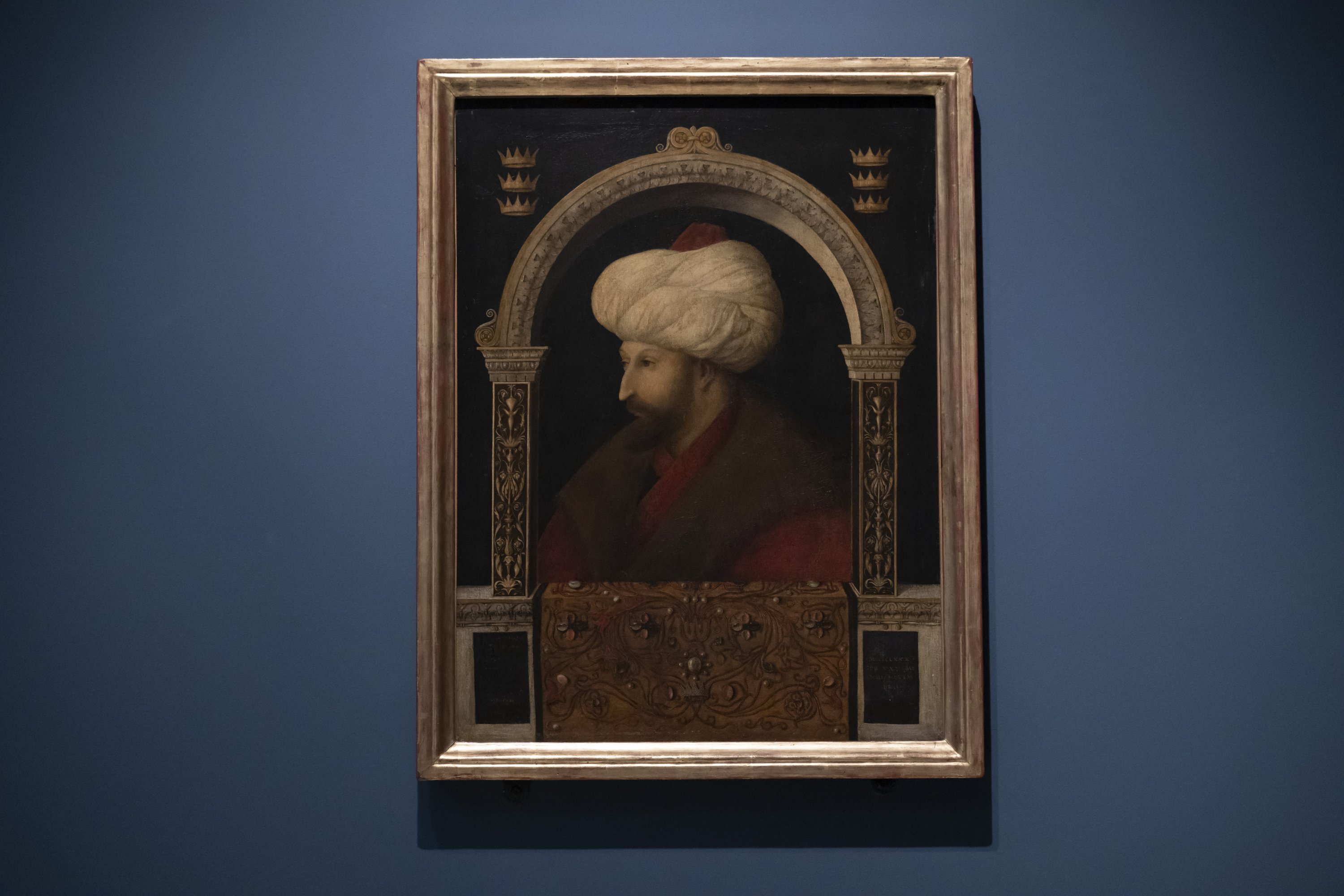© Turkuvaz Haberleşme ve Yayıncılık 2026
The portrait of Ottoman Sultan Mehmed II, also known as Mehmed the Conqueror, painted by Italian artist Gentile Bellini, is being exhibited at the Victoria and Albert Museum in London.
The famed portrait of the sultan was painted by Bellini in 1480, a year after his arrival in the Ottoman capital Istanbul, at Mehmed's request.
In 1479, Mehmed sent a request to Venetian authorities for a portraitist and they chose the celebrated Bellini, who was well qualified for the task, having recently completed a series of portraits of the dukes of Venice, according to information from the National Gallery and Victoria and Albert compiled by Anadolu Agency (AA).
Bellini stayed in Istanbul for about a year and a half.
In the painting, the sultan is set against a dark background behind a marble ledge, but Mehmed's face and body slightly face the viewer, unlike most portraits of that time, which were painted in the traditional profile view.
"This pose may have been chosen as it was a new fashion in portraiture in the late 15th century and particularly popular in Venice," according to the National Gallery, which has the piece in its inventory.
Mehmed is framed within a stone arch carved with classical-style motifs, and, evoking Venetian art, Bellini used illusionistic carved pillars.
Additionally, golden crowns on both sides of the portrait are believed to symbolize his conquests, including the 1453 conquest of Istanbul.
The painting had been badly damaged but was repainted in the 19th century.

In the portrait, the Latin words imperator orbis or "ruler of the world" can be observed, along with an inscription with a date of Nov. 25, 1480.
The Victoria & Albert Museum is also home to a medal by Bellini depicting Mehmed II.
Mehmed II is the Ottoman sultan who conquered Istanbul and earned the title of Fatih (the Conqueror) at the age of 21 and leveled up a Turkish state into an empire that would rule regions in multiple continents for centuries to come.
The conquest of Istanbul is Mehmed's best-known victory, but he also ensured Ottoman control over Serbia, Morea (part of southern Greece), and Trebizond (modern Trabzon) in the northern region of modern Turkey as well as Bosnia, Albania, and some Anatolian (central Turkish) territories.
In over two dozen military campaigns during his reign, the emperor managed to conquer large swathes of territories, increasing Ottoman control to over 2.2 million square kilometers (850,000 square miles).
